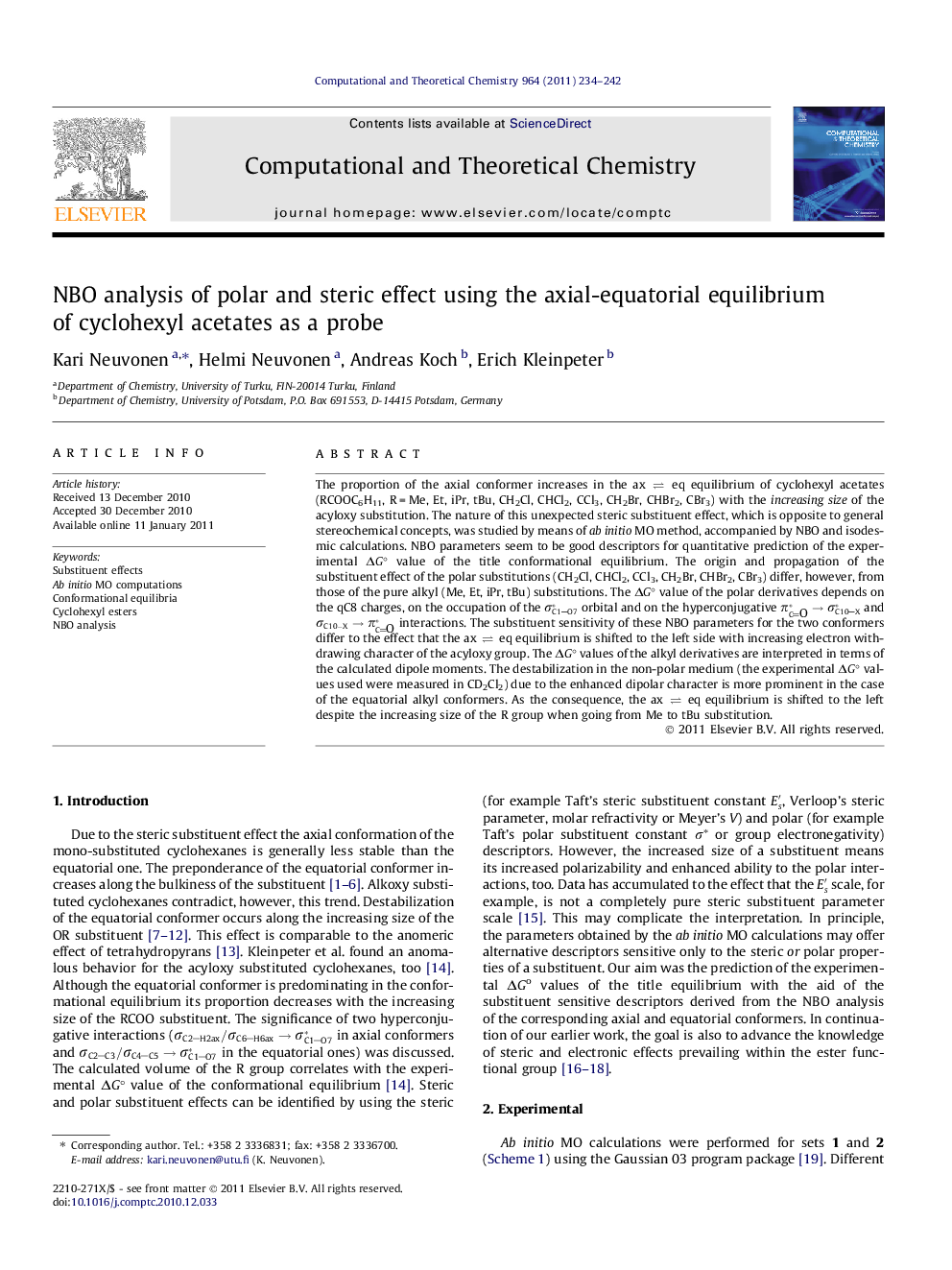| Article ID | Journal | Published Year | Pages | File Type |
|---|---|---|---|---|
| 5395328 | Computational and Theoretical Chemistry | 2011 | 9 Pages |
Abstract
The proportion of the axial conformer increases in the ax â eq equilibrium of cyclohexyl acetates (RCOOC6H11, R = Me, Et, iPr, tBu, CH2Cl, CHCl2, CCl3, CH2Br, CHBr2, CBr3) with the increasing size of the acyloxy substitution. The nature of this unexpected steric substituent effect, which is opposite to general stereochemical concepts, was studied by means of ab initio MO method, accompanied by NBO and isodesmic calculations. NBO parameters seem to be good descriptors for quantitative prediction of the experimental ÎG° value of the title conformational equilibrium. The origin and propagation of the substituent effect of the polar substitutions (CH2Cl, CHCl2, CCl3, CH2Br, CHBr2, CBr3) differ, however, from those of the pure alkyl (Me, Et, iPr, tBu) substitutions. The ÎG° value of the polar derivatives depends on the qC8 charges, on the occupation of the ÏC1O7â orbital and on the hyperconjugative ÏCOââÏC10Xâ and ÏC10-XâÏCOâ interactions. The substituent sensitivity of these NBO parameters for the two conformers differ to the effect that the ax â eq equilibrium is shifted to the left side with increasing electron withdrawing character of the acyloxy group. The ÎG° values of the alkyl derivatives are interpreted in terms of the calculated dipole moments. The destabilization in the non-polar medium (the experimental ÎG° values used were measured in CD2Cl2) due to the enhanced dipolar character is more prominent in the case of the equatorial alkyl conformers. As the consequence, the ax â eq equilibrium is shifted to the left despite the increasing size of the R group when going from Me to tBu substitution.
Related Topics
Physical Sciences and Engineering
Chemistry
Physical and Theoretical Chemistry
Authors
Kari Neuvonen, Helmi Neuvonen, Andreas Koch, Erich Kleinpeter,
